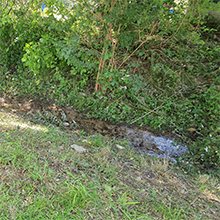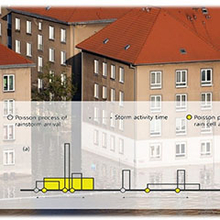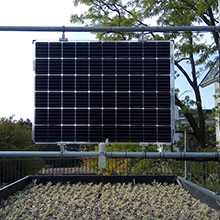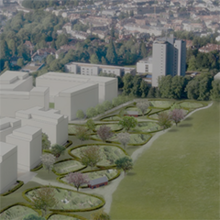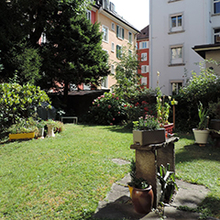Department Urban Water Management
Multifunctional blue-green design

The climate and biodiversity crises will have a profound impact on cities that are already facing numerous of challenges such as stormwater management, urban heat, and population growth. There is a growing call to use Nature–based Solutions (NbS), i.e., mitigation measures seeking to protect, manage, and restore ecosystems, to holistically support cities with human well–being, biodiversity, and a range of environmental challenges in the era of urbanization and climate change. Despite increasing academic discussion of multifunctional NbS, their holistic implementation in the built environment as distributed blue-green stormwater infrastructure (BGI) systems, remains elusive.
Despite broad planning efforts, these structural NbS, or BGI, consisting of a range elements such as vegetated basins, green roofs, or constructed wetlands, are often implemented for a single purpose (e.g., stormwater management), with a limited consideration of synergies and challenges linked to other ecosystem-services. In a more variable and deeply uncertain climate, we will have to ensure that BGI elements will be able to maintain their performance to perform a range of functions that are assumed to occur based on principles of ecology. To move away from these siloed and ad-hoc methods, a transition to multifunction design of blue-green infrastructure is needed to systematically design BGI systems as part of the urban transition towards sustainable, livable, and resilient cities.
The multifunctional blue-green design group at Eawag focuses on developing integrated engineering design and decision making strategies for blue-green infrastructure at the neighborhood scale. We combine laboratory analyses, field monitoring campaigns, statistical analyses and simulation models to quantify the performance of different BGI elements and configurations in the environment for numerous design objectives, including stormwater management, heat mitigation, species diversity. We also evaluate how BGI would function in a future climate using high-resolution climate scenarios. This research advances the state of the art by linking complex models and information into a systematic framework, thus moving away from traditional siloed and ad-hoc methods, towards a better, interdisciplinary approach.




